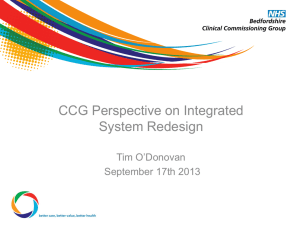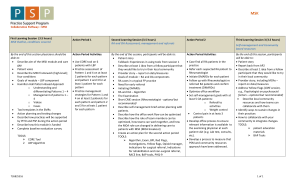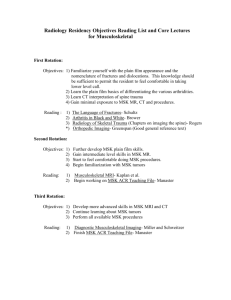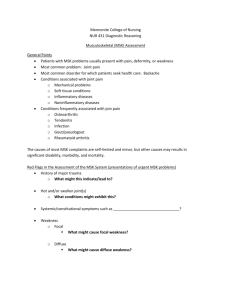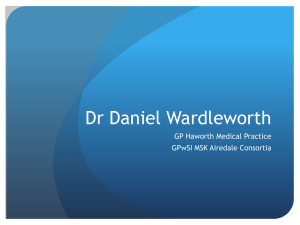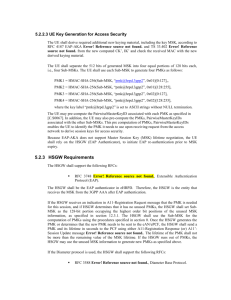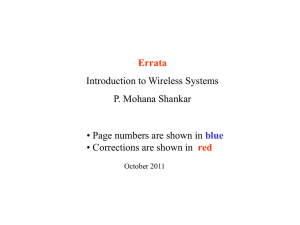abstractness & psychological reality Phonology
advertisement
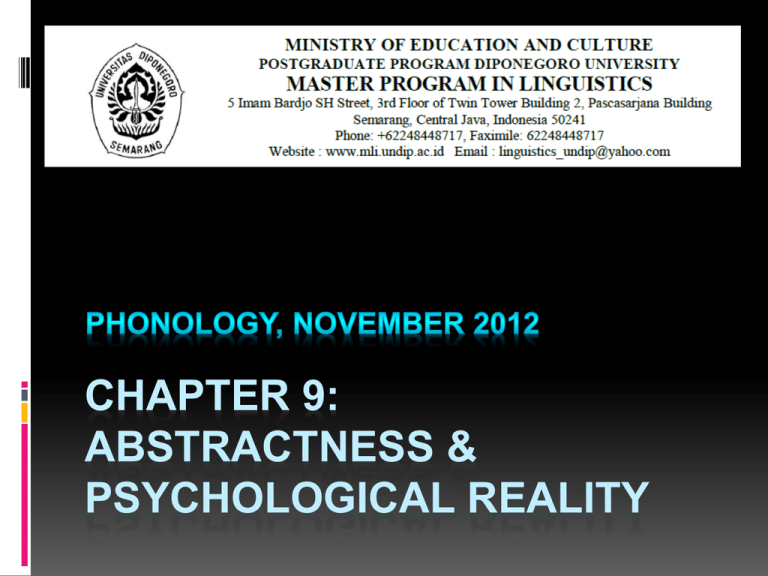
CHAPTER 9: ABSTRACTNESS & PSYCHOLOGICAL REALITY Main Topics Abstract Analysis: When Underlying Representations ≠ Surface Forms Valid motivations/evidence or limits for Abstract Analysis Empirical Data Synchronic Diachronic (Historical Linguistics) Extra Linguistic Data Language acquisition Abstractness Underlying Representations (UR) are usually connected to their Surface Forms (SF): they appear as one form of the SF. MengMe- Men- Mem- Meny- Menj- Meng- Abstractness Abstract Analysis refers to when the UR never shows up in the SF: X A B C Problem: How abstract can you go? Abstractness Motivations for limiting abstractness: Restriction of distinctive features. Mental reality & language acquisition: How children acquire language & make abstract connections between SF & UR. Abstractness Motivations for limiting abstractness: Abstractness and phonemic representation: URs usually have broader SF distributions, based on distinctive features. mə- / _____[l, r, w, y, m, n, ny] = + sonorant məŋ / __ [k,h,g,a,i] = no natural class Thus, [məŋ] has a broader distribution. Initial Principles Limiting Abstractness 1. The UR of a morpheme must actually be pronounced as such in some SF containing the morpheme. Problem: Too restrictive in some languages. Example: Palauan. Initial vowels unstressed -> ə Initial Principles Limiting Abstractness 2. The UR of a morpheme must contain only segments actually pronounced as such in some related word containing the morpheme. Problem: There are some languages with examples where this doesn’t happen. Example of Abstract Analysis: Kimatuumbi Focus: Lexical class 3 prefix /mu/. Never surfaces as /mu/ Surfaces as [m], [n], [ŋ], [mw] Example of Abstract Analysis: Kimatuumbi Analysis: 2 processes for nasals. Examples Prefix /ɲ-/ -> noun & adjectives class 9 Prefix /mu-/ -> second plural subjects Comparison between the phonological process of these two prefixes in comparison to lexical class 3 prefix /mu-/ Example of Abstract Analysis: Kimatuumbi Differences between /ɲ-/ and /mu-/ 1. /ɲ-/ assimilates to place of articulation of C, while /mu-/ deletes [u], assimilates and nasalizes C (this is optional) /ɲ-/ bowaana -> m-bomwaana goloka -> ŋ-goloka /mu -/ buundike -> m-muundike or mu-buundike laabuke -> n-naabuke or mu-laabuke Example of Abstract Analysis: Kimatuumbi 2. /mu -/ + nasal consonant = deletion of [u]. Whereas /ɲ-/ + nasal consonant = deletion /ɲ/ -> ∅ mimina -> mimina /mu -/ mimiine - > m-mimiine 3. /ɲ-/ assimilates and turns voiceless C into voiced, /mu-/ only assimilates, no voicing change. /ɲ/ tinika -> ndinika /mu-/ teleke -> nteleke Example of Abstract Analysis: Kimatuumbi 4. /ɲ-/ causes following glide to become a voiced stop, while /mu -/ changes glide to nasal. /ɲ/ wikilya - > ŋ-gwikilya /mu -/ yikiti -> ɲ-ɲikiti 5. /ɲ-/ has no effect on vowel length, /mu-/ become [mw] and vowel is lengthened /ɲ/ epeesi -> ɲ-epeesi /mu-/ eleew -> mw-eeleew Example of Abstract Analysis: Kimatuumbi So what about /mu-/ class 3 noun prefix? It behaves the same way as nouns & adjectives class 9 prefix /mu-/ Nasalizes voiced consonants 1. 2. 3. 4. laabuka -> n-naabuka [u] deletes before following nasal mulika -> m-mulika Does not voice following voiceless Cs. teleka -> n-teleka Shows up as [mw] before vowels & lengthens the vowel. epuka -> mw-eepuka Thus the UR of this prefix should be /mu-/ even if it never surfaces as [mu-]. Questionable Abstract Analysis: English Chomsky & Halle (1968): dipthong [ɔy] derives from [ɶ]. Problem: does not account well for alternation, compared to Kimatuumbi analysis. Alternation is based on sets of words in which have questionable synchronic relatedness. E.g. joint-juncture, pointpuncture, boil-bullion (pg 271). Independent evidence: Historical Restructuring Paul Kiparsky (1968): a) Absolute neutralization: distinction between phonemes in morphemes neutralized in all cases. b) Contextual neutralization: distinction between phonemes in morphemes neutralized in specific contexts. E.g. in, im, iŋ, iɲ = in only for this specific English prefix. Contextual neutralization more common and more ‘real’, absolute neutralization seen as constructed. Independent evidence: Historical Restructuring Kiparsky: Historical sound change can be used as a test of abstract analysis. Case of Yiddish, language of Jewish immigrants in Germany. Picked up rule of devoicing final stem consonant from German tag -> tak (day) tagn (days) But was later lost in Northeastern Yiddish => reversal of sound change tok -> tog based on the plural togn Independent evidence: Historical Restructuring Exception: gelt (money) did not reverse to geld. Analyis: no plural form with the voiced consonant, unlike tagn/togn. The singular form subject to devoicing rule, plural was not. In the case of tak/tok - tagn/togn, Yiddish children could abstract from the plural the UR of tag/tog which was resurfaces when devoicing rule was lost. Yiddish children never heard the UR of ‘geld’ during language acquisition. Conclusions Two methods of abstract analysis has been shown: a. Domain-internal: Kimatuumbi example, based on feature constraints. b. Domain-external: Yiddish example, based on data from historical language change and not synchronic phonological data. Conclusions Abstract analysis of URs must be motivated by: Limitations of distinctive feature theory, in the case of domain-internal analysis. Principles of child language acquisition. Explains whether the URs are plausible based on how children learn language from spoken experience. Abstract analysis is often abstract, in the sense that it is often difficult or even impossible to truly prove the psychological reality of proposed URs.
